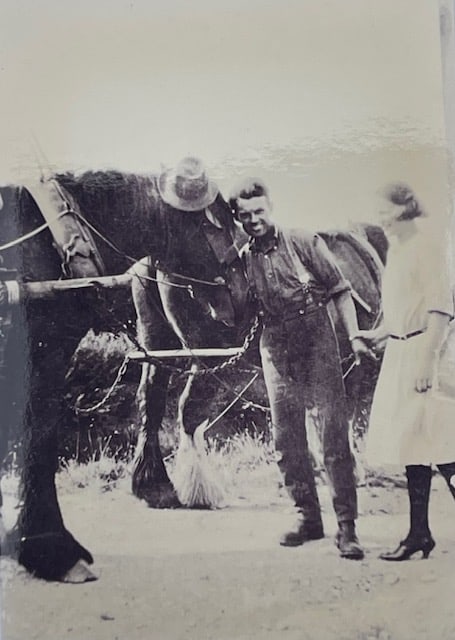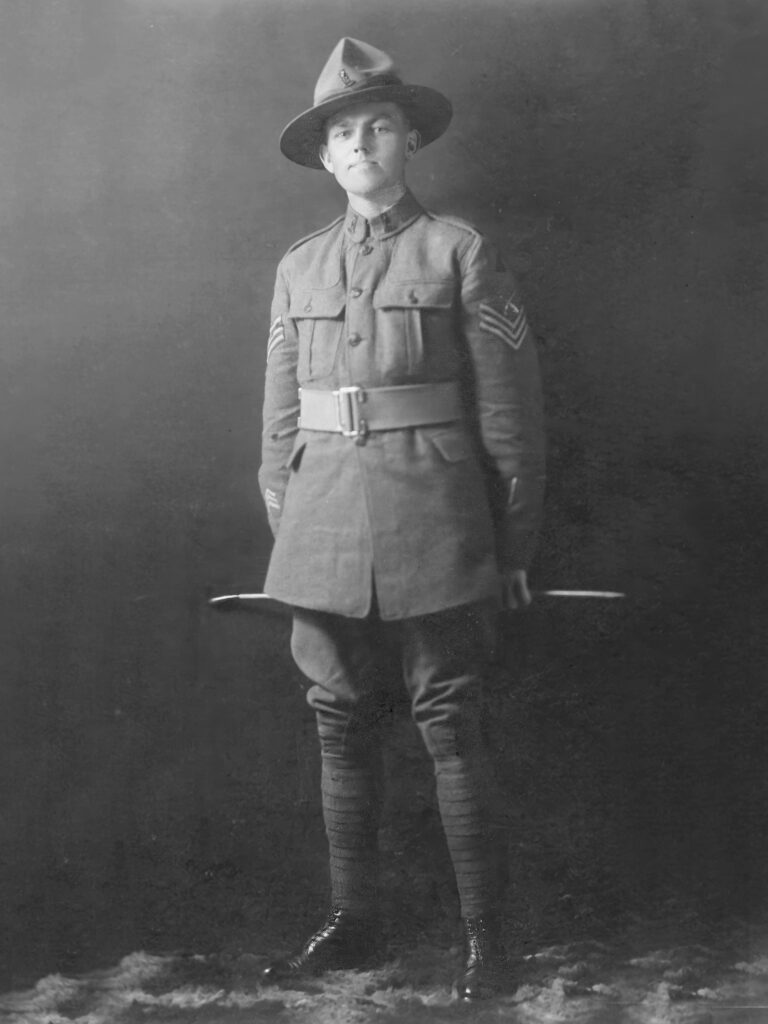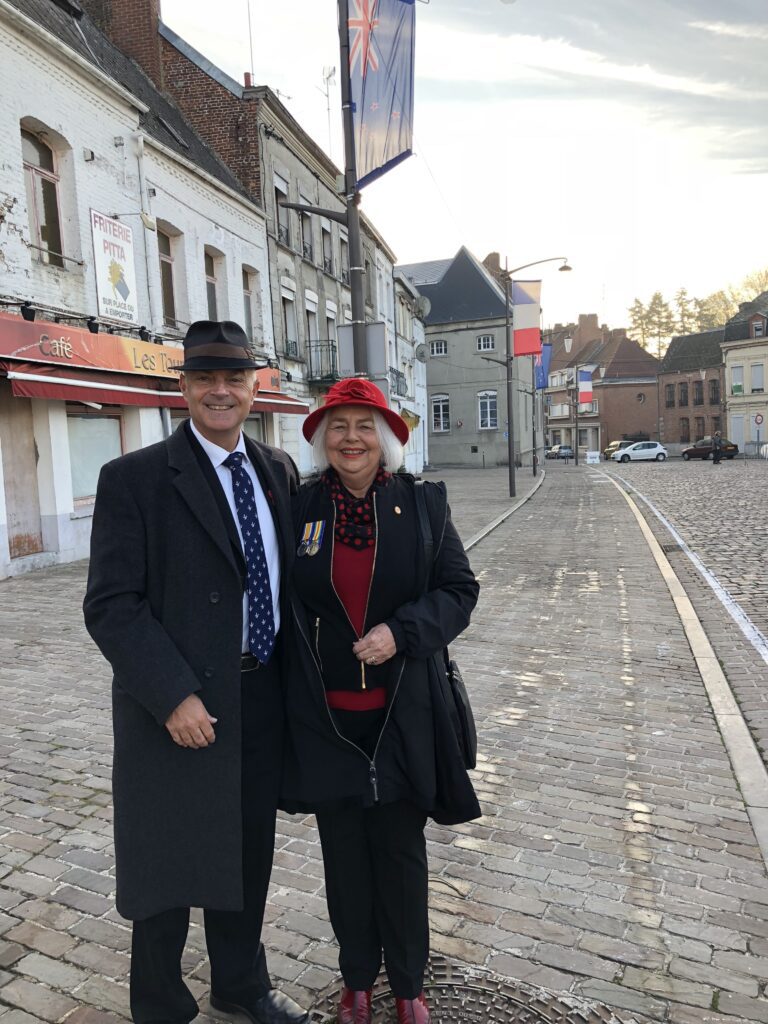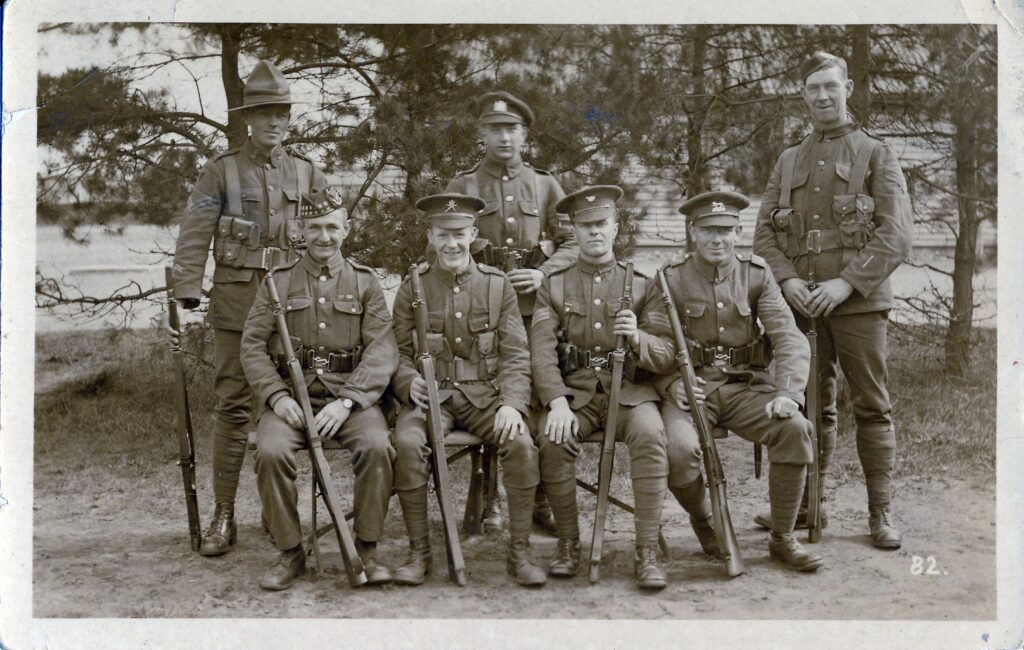When Jackie Rapley was a teenager, her father Jack Hughes was disapproving of her going to war movies which were all the fad in the early-60s.
“He would say, ‘War is not for entertainment, war is not fun’,” remembers Jackie (80).
Jack (real name John Stanley Hughes) fought on the Western Front and his division also played a key role in the liberation of the small town of Le Quesnoy in Northern France on November 4, 1918.
He had strong feelings about the war after his experience on the front and being shot and wounded in the Battle of Messines in 1917.
“He walked back through the lines of troops, through the dead and the injured, it must have been awful,” says Jackie.
He didn’t talk about the war much at all she remembers, but sometimes he would recall the conditions they lived and fought in.
“He’d talk about the rats in the trenches, the tough conditions, the mud, and the winter cold. I suppose the horror had dissipated a bit, but he would only talk about it occasionally.”

On his return to New Zealand he settled in Mid Canterbury, married, had three children, and worked as a farm manager. Because of his wounds, two of his fingers never opened out again, yet he still chose farming.
“He picked up his life and carried on. After what he had been through, I really don’t know how he did it.
‘‘He was a lovely, kind, and caring father,’’ she says. ‘‘He never complained, was very hard working. My dad was both a gentleman and a gentle man.”
Map of the human heart
While Jackie knew her father had fought on the Western Front and at the Somme and Messines, she was not aware of his involvement in the liberation of Le Quesnoy.
She discovered the Le Quesnoy connection by chance. He had brought a number of maps home with him from the war which Jackie treasured.
“I hadn’t looked at them much because they were 100 years old and very fragile,” she says.
It wasn’t until she had the maps copied and digitised that she was able to explore the small towns that were named on the map.
“When I Googled Le Quesnoy it came up with a lot of information about the New Zealand Army’s liberation of the town and I discovered the 3rd Battalion New Zealand Rifle Brigade – Dad’s division – had been involved in the liberation and I was intrigued.”
From farmer to soldier
Born on June 13, 1894, at Waitohi Flat, South Canterbury, Jack was working on a farm as a 21-year-old when he enlisted in the army. He would serve from April 1916 until June 1919 – a total of three years and 66 days.
He was posted as a rifleman to the 3rd Battalion and did his initial training in New Zealand until his departure on the HMNZ Waitemata on July 26, 1916.
Disembarking from Devonport they arrived in England on October 3, 1916, marched to Sling, Wiltshire, and then left for France on October 20. Jack served on the Western Front from November 1916 until he was sent to hospital with mumps in April, 1917, before returning to the field in May.

In June the Battle of Messines took place with Jack suffering a gunshot to his right arm. He was treated in the field before being transferred to the New Zealand General Hospital in Brockenhurst, England on June 15.
The scale of the Messines battle was vast with 25,000 Germans and 17,000 Allied soldiers killed, including 700 New Zealanders.
After Jack returned to France in October 1917, it would be a year before his division helped to liberate Le Quesnoy.
In January 1918, Jack attended a rifle course at Strennsill School of Musketry in Yorkshire, England, and returned for another course in April of that year where he received First Class honours.
By the end of the war Jack had been promoted to Sergeant and left England from Liverpool on the Northumberland troop ship on May 1, 1919, arriving back in New Zealand on June 7, 1919.
He received the British War Medal in 1921 and the Victory Medal in 1922.
Return to Le Quesnoy
Jackie was 29 when her father died in 1973. To remember the service of her father, Jackie, her son James, and granddaughter Lucia, visited Le Quesnoy in 2018 to attend the 100th commemoration of the liberation.
“Three generations of dad’s family stood in the cobble-stoned square where he had stood when the town was liberated. I hoped he would be proud. It was very special but also quite strange. It had not changed in 100 years – it was a very emotional feeling.”
There were 196 New Zealanders who died in the liberation of Le Quesnoy, of those 80 were from Jack’s division. The resourceful way Kiwi soldiers used a ladder to scale the walls of the town meant no civilian lives were lost during the liberation.

The NZ Liberation Museum – Te Arawhata was still in its early planning stages then and Jackie is thrilled the doors are now open.
‘‘It’s incredible to see the museum come to fruition. Le Quesnoy is a lovely town and I hope Te Arawhata is a place that Kiwis, especially the young ones, will visit to remember and honour what soldiers like my father did in the war.”
